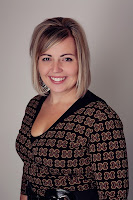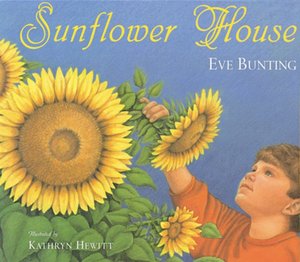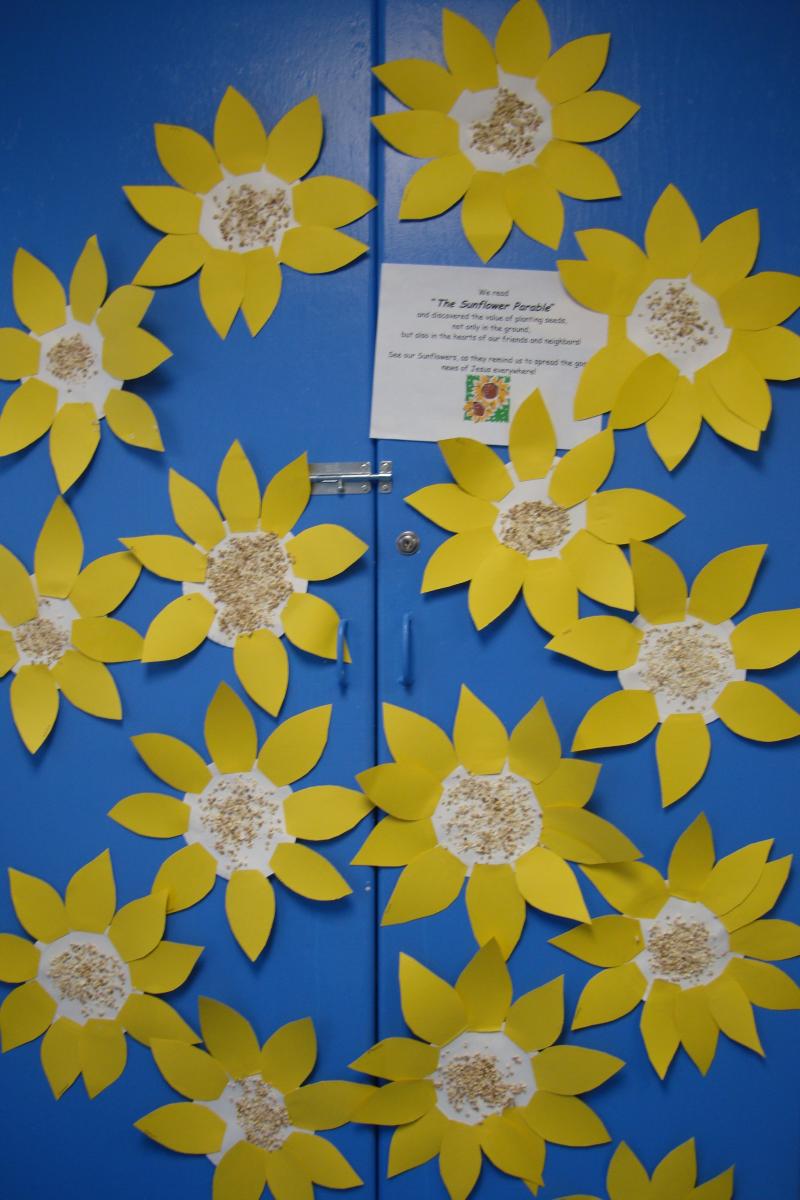Play counts!
Let children learn through play.
Let them explore, make messes, try and fail.
Let them handle conflict, control themselves and ask for what they need.
Let them observe effects and figure out the cause.
Let them solve problems, own discoveries and feel empowered....ALL through play!!
Hello! My name is Denita Dinger and I am a defender of play and a professional brain developer. I am also a self-declared "plopper". Through my 14 years of operating a family childcare business, I have had the privilege of observing children, ages 2-6, make sense of this wonderful world we live in. I have also discovered the art and value of the "plop".
A plop, by my own, self-made definition is (insert vision of me putting on instant, IQ-boosting spectacles and clearing my throat): an object, book, story, song or mystery word that is quietly placed (aka: plopped) into a child's environment while sharing no (zip, zero, none, notta) pre-conceived adult ideas in order to give ownership of discovery to children. The "plopper" is prepared for what could POSSIBLY happen...but is willing to drop those ideas in order to follow the usually BETTER possibilities a child's mind imagines!
I use to have a love affair with planning. I can't tell you how much I loved filling planners with activities, songs, games, and materials that I KNEW young children would greatly enjoy. I knew how long they would want to do each thing. I knew that they would want to learn about dinosaurs for two weeks in April. I loved planning for months in advance and looking at all the learning that was going to happen. I loved marking off my little check list of all the early learning guidelines that we were going to meet. Bottom line, I. LOVED. BEING. IN. CONTROL.
I learned a lot during those years of being in control, leading young children. Those years of being afraid to trust children to lead me. Those years when children asked me what we were going to do every single day, unable to lead themselves.
1) When one forces children do something, one is going to have discipline issues.
2) I took it personally when "my crew" didn't like MY hard work and planning, and found myself making them do my "great" ideas anyway because I just KNEW they would see the light.(see #1 for why this is a problem)
3) Children have their own ideas of what they would like to do.
4) When children are followers instead of leaders too much, they lose confidence in their own ideas.
5) Sometimes, MOST times....better, random and spontaneous things happen, that plans can't possibly be made for, that are way better then any plan ever could be.
6) When wonderfully spontaneous things happen enough, one accepts the fact that over-planning and leading is not such a good way to accomplish early learning goals......(insert LIGHTBULB!).
These lessons are what led me to being a "plopper". I loved to plan, but I had realized the negative side of being too rigid and too planned. So...I began planning a plop. It was the perfect marriage between my love of planning, and giving children open-ended opportunities to be in charge of their own learning.
Here are a few plop examples to help explain the concept of "plopping" and get you on your way to happily following children, yet being able to plan too:
The "plop": "Where's the Dragon" by Jason Hook.
My adult ideas: none really, I just thought it was a good book that would certainly inspire some amazing imaginative play
What evolved: over a YEAR of daily, imaginative, dragon hunting fun! There has literally not been a single day in the last year that have not involved a dragon or two!
Upon the initial reading, this book became a hit. The children were instantly enthralled with dragons. Add to this book the obvious props of dragons and you have endless imagination possibilities! ( WHY is imagination important? Imagination is how we solve problems, it's the beginning of invention...imagination is VITAL and should really be a learning goal or learning guideline...whatever you choose to call it. Imagination is found in PLAY and the right "plops" can foster some simply amazing imaginations!)
Ever since the first plop of this book a YEAR ago, the children are constantly keeping their eyes out for dragons. I hide dragons in all sorts of places....sometimes high...sometimes low. They need to use teamwork and problem solving skills in order to retrieve the dragons once they find them.
I even throw in some delayed gratification by hiding the dragons in very difficult to find places! We have hunted for days...but always find success through hard work and determination (VALUABLE life-long skills!)
Can you spot the dragon? According to Grandpa, "...you must look high and low and believe hard enough" in order to find dragons!
As soon as Gavin spotted the dragon, off he went to get the tool he needed in order to solve the problem! The tool of choice for this mission? The "grabbers" (another of my favorite plops... look under "Grabbers" in my blog, Play Counts, for other uses for "grabbers" in your program).Visual planning, small motor control and sheer determination and persistance are at work as Gavin focuses on getting the dragon down from it's hiding spot.
Problem solved, now it's time to take this dragon for a ride in the sky!! Fly dragon! Fly! (and fly Gavin too....on the sense of pride that comes with solving problems!!)
Recall the source of all of this learning (imagination, sense of pride, teamwork, solving problems, persistance, determination, muscle control (aka: prewriting) and visual planning and tracking)....a simple plop of a book and some dragons that started to mysteriously appear.
The rules of plopping:
1) Plop quietly...without suggestions. When children ask about the plop, respond with an open-ended statement like "What do you think it is?" "What do you think it does?" "See what you can make it do!" etc.
2) Listen and follow the children. Add to the plop to keep the curiosity and creativity flowing.
3) You do not have to plop something new every single day. Some of my best plops have lasted well over a week. Sometimes with additions to the original plop, and sometimes without.
4) There is no right or wrong way to plop.
5) Give the children TIME to explore the plop. Just because interest isn't there immediately, doesn't mean your plop is a flop! Be patient.
The "plop":
- cardboard corner supports I found while dumpster diving (Hey...ya gotta do, what ya gotta do! There are GREAT treasures to be found in appliance store dumpsters!)
- bowls of paint
- 2" diameter rubber balls
- a treadmill box (this box has been a part of our environment for years and years...it plays MANY roles)
- white paper to line the box
My Adult Ideas: ramp painting
What evolved: ramp painting loaded with way more learning then I originally realized
I plopped the corner supports, bowls of paint, small balls and our "creativity zone" box (aka: a treadmill box that has been in our environment for years...it has been countless things!) lined with white paper.
Here is what evolved:
Ella and Ty are debating on the angle they should be holding the ramp. Can you tell by Ella's expression that she does not believ Ty is right?
I love giving children opportunities to organize themselves. Teamwork, cooperation, collaboration and compromise are life-long skills. Notice how there are the "Ramp Holders", the "Paint Dippers" (in the background, dipping the balls in the bowls of paint), and lots of "Quality Assurance" workers making sure each job is being done correctly!

The "Plop":
- foam beads
- container with 3-4 inches of water
- several (never enough for everyone...if children never encounter conflict, they don't learn how to handle conflict) 6-7 inch long pieces of plastic lacing tied in a knot at one end.
My Adult Ideas:
Simply taking something we normally do inside in a dry environment and taking it outside plus adding water to it.
What evolved:
Read on and see.....the imaginations of young children never ceases to amaze!!
At first, they were making necklaces, until they realized the lacing was too short, and couldn't possibly be used for necklaces. The gears started turning.
Soon it was discovered that their creations FLOATED!
The children took complete control of this plop by adding to it.
I admire a child's intuitiveness when they add other tools and materials to what I've plopped, in order to accomplish a vision that they have!
What did they add? The plastic rain gutters and the hose. An idea had been born, it was time to test it out!
WATER SNAKES! Finally, a name for the creations. Literally hours of fun came out of moments of curiosity, trial and error and imagination!
 |
1) sharing
2) teamwork
3) empowerment (using the hose is IMPORTANT, and children know that)
4) trust (they know I trust them to let them use the hose knowing that they won't get each other soaked)
5) organizing
6) vocabulary
7) science concepts
8) trial and error
9) cause and effect
10) sense of pride (not only number 3, but also successfully building their snake, and making it GO!)
Take a look at the next photo: Alayna had learned through trial and error that the angle that she held the sprayer made a difference to how quickly her snake traveled. She is not just randomly holding the hose.
Good old trial and error! Quite possibly the best way to learn! Gavin discovered that the dragons are too heavy, and do not float. Therefore, they will not float down the ramp, AND they prevent the water snake from being able to move too!
It was fascinating to watch his learning process as he picked up the dragon, turned it upside down, and tried again with the same results. Picked it up again, taking a closer inspection, placing it back in the gutter with, once again, the same results. Finally he exclaimed "Hey guys! The dragons don't work! They don't float like the snakes do!"
Appreciate how important sharing what he learned with others made him feel. Empowering young children....through foam beads, water, a toy dragon and plastic lacing...who knew!?
Once again, children organizing themselves. This line was formed without a word from me. When it is a child's plan, their idea, patience comes much easier I truly believe!
Take these three ideas, copy them exactly, OR...better yet, adjust them and make them your own...the possibilities are really endless! Add some shaving cream to the foam bead plop. Add some square objects to the ramp painting plop for a little practice in learning through trial and error!
Through it all, remember: PLAY COUNTS when we let it!!
Until next time....go forth and plop!
Denita Dinger
Defender of Play
Professional Brain Developer
Plopper of Possibilities





































 Laura Eldredge is a teacher and curriculum coordinator at a NAEYC accredited early childhood program in Connecticut. She also co-founded the website
Laura Eldredge is a teacher and curriculum coordinator at a NAEYC accredited early childhood program in Connecticut. She also co-founded the website 













